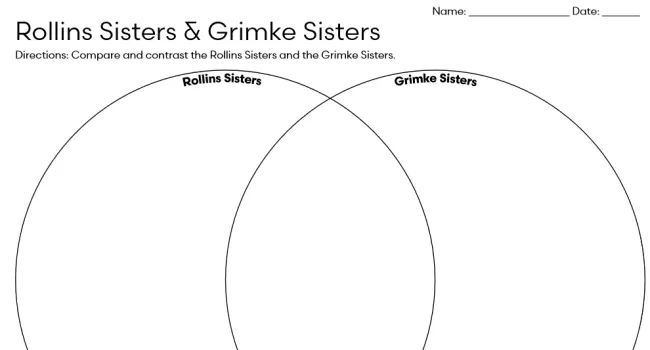Frances Rollin was propelled into the national spotlight with the Pilot Boy steamship incident, in Charleston, South Carolina, where the captain refused her service due to the color of her skin. Frances Ann “Frank” Rollin was the oldest of five daughters, born into an elite, aristocratic, free Black family.
Carole Ione Lewis, the great-granddaughter of Frances Rollin Whipper, has written extensively about the history of the Rollin family, whose origins trace back to the island of Santo Domingo. Frances’ father, William Rollin, was a wealthy business owner in the lumber industry. William Rollin taught his daughters lessons on how to matriculate and have influence in a system of which they cannot be a part. The Rollin sisters tirelessly advocated for activism and civil rights following the Civil War.
In 1859, Frances Rollin travels to Philadelphia, Pennsylvania, where she furthers her education at the Quaker Institute of Colored Youth. The other Rollin sisters also further their studies in higher education.
Standards
- 8-5 The student will understand the impact of Reconstruction, industrialization, and Progressivism on society and politics in South Carolina in the late nineteenth and early twentieth centuries.
- USHC-4 The student will demonstrate an understanding of the industrial development and the consequences of that development on society and politics during the second half of the nineteenth and the early twentieth centuries.
- USHC.3.CE Assess the causes and effects of significant turning points in the Populist and Progressive era from 1877–1924.
- This indicator was developed to encourage inquiry into the causes of American expansion, such as a growing and diversifying population and the expansion of the plantation economy. This indicator promotes inquiry into the relationship between sectionalism and political compromise, culminating in the Civil War.
- 8.3.CC Analyze debates and efforts to recognize the natural rights of marginalized groups during the period of expansion and sectionalism.
- 4.5.E Analyze multiple perspectives of the economic, political, and social effects of Reconstruction on different populations in the South and in other regions of the U.S.
- This indicator was developed to encourage inquiry into founding principles as viewed through this period of federal government involvement, the development and realignment of a new labor system not based on a system of slavery, and the significant political realignment of the South.
- 4.4.CC Identify and evaluate the economic, political, and social changes experienced throughout the Civil War.
- 4.4.P Explain how emancipation was achieved as a result of civic participation.





